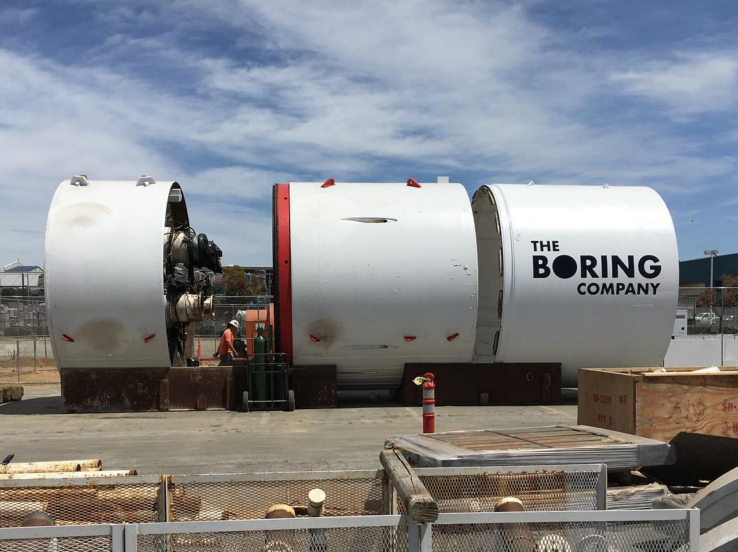Boring? Why not!
Nobody likes being stuck in traffic, especially in large cities. Elon Musk, founder of Tesla Motors and SpaceX too, got stuck in a traffic jam. The net result? He started The Boring Company.
What is this Boring business all about?
Unlike other players in the transport sector, such as Uber who are looking to develop aviation-based transport solutions within cities, Musk’s approach is somewhat lower than expected.
The Boring Company, also known as Tunnels R Us and To Be Continued, is a tunneling firm formed in 2016 after Musk tweeted out that traffic was driving him nuts and that he would build tunnels to escape traffic.
Traffic is driving me nuts. Am going to build a tunnel boring machine and just start digging…
— Elon Musk (@elonmusk) December 17, 2016
Tunnels under a city, that’s it?
Not quite. TBC has a more comprehensive plan in store. It’s a vast network that involves a lot of tunneling, construction and automation.
TBC’s plan is simple:
One, start tunneling under the city. Build a network of tunnels along with access points.
Two, build a network of guided pathways under the ground, that operate using these tunnels. There are select entry-exit points where the tunnels can be entered from above the ground.
Three, a system of automated ‘carts’ will allow vehicles to drive onto them, take them underground and enter the network.
Sounds familiar? Indeed, the last time Musk was stuck in a traffic jam, in 2013, he came up with the design of the Hyperloop, a futuristic high-speed transport system which he then explicitly open-sourced, allowing anyone to work on a prototype. The system is being designed for speeds of up to 200km/hr, and knowing Musk, will in all probability work on the principle of Magnetic Levitation, which is also the backbone of the Hyperloop.
The system is still in its initial stages however. TBC is currently building a tunnel that is 30 feet wide, 50 feet wide and 15 feet deep under SpaceX’s corporate headquarters in Los Angeles as it would require no additional permits. In February, a photo of the tunneling was posted on Twitter.
Minecraft pic.twitter.com/lU1YzJjLOZ
— Elon Musk (@elonmusk) February 4, 2017
Why a tunnel based system?
Musk has stated in the past that the existing system of transport is largely two-dimensional, and that the tunnel system would be able to set up a three dimensional transport network. He said that without tunnels, everyone would be stuck in traffic forever, adding that it would be the ‘key’ to solving the urban gridlock. He also said that tunnels going 20 or 30 layers deep would be suitable for any city, no matter how big it was.
Musk has stated in the past that the existing system of transport is largely two-dimensional, and that the tunnel system would be able to set up a three dimensional transport network. He said that without tunnels, everyone would be stuck in traffic forever, adding that it would be the ‘key’ to solving the urban gridlock. He also said that tunnels going 20 or 30 layers deep would be suitable for any city, no matter how big it was.
Going up versus going down
At the same time, Uber has been advocating an aviation-based on-demand transport system. While an aviation-based transit system within a city may seem more feasible than a tunnel-based one, getting a working aircraft that can fly short distances with multiple stops is equally far into the future. At the same time, aviation is highly fuel-intensive, a constraint that terrestrial, ground-based transit systems can overcome.
At the end of the the day, Musk’s boring plan is similar to an underground metro rail system, except that it carries cars instead of people. It is like a cross between a Personal Rapid Transit (PRT) system and a Mass Rapid Transit System (MRT).
It is still unclear whether the system will work on magnetic levitation or not, but given that the proposed speeds are in the range of 200km/hr, one would assume that it would have to be maglev-based.
Too futuristic?
The system is certainly too futuristic a design. Musk’s last idea, the Hyperloop is still years away from commercial operations, and this too is of a similar nature.
There are lot of problems that need to be solved before it can be practically viable. Current tunnel systems under the ground are usually limited to a few levels deep. Having 30 levels is a huge challenge. Further, such a vast network of tunnels has never been done before. The most crucial requirement- ventilation underground at such depths need to be looked at.
However, what makes it more practical than Uber’s plan is the very fact that it is a grounded system, similar to road and railway networks. A system that is grounded is more efficient in the long term as well as safer in the event something goes awry.
![]()

